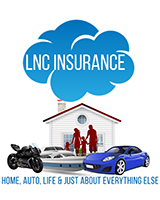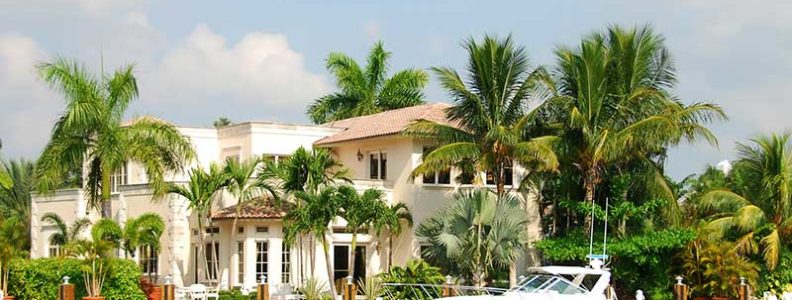How to Insure Your Second Home
Many people consider buying a second home for several reasons, including:
- Vacation home
- Rental property
- Tax benefits
- Long-term profits
- Flexibility in where you live
No matter what reason you choose to buy a second home, it’s important to protect your large investments with insurance. Just like your primary home, you should obtain homeowners insurance with coverage appropriate to the location of your second dwelling. However, it is essential to understand that there are special considerations for your second home that you may not be aware of.
Check Your Primary Homeowners Insurance Policy
First, check your current homeowners insurance policy to see if it will cover a second home. Some policies may extend coverage, which could make insuring your second place a breeze. However, many insurance companies only cover one home because every home is unique and comes with its own coverage needs. For instance, your vacation home may be in a high-risk area for floods or earthquakes.
Another example could be that your new property is in an area that is prone to vandalism or theft. No matter the reason, it’s important to consult with a homeowners insurance company in your area to assess the needs of your second home.
Insurance Considerations for Your Second Home
Buying an insurance policy for your second home is a lot like buying a policy for your primary home. However, there are some risk factors associated with second homes that may change your insurance rate. Before purchasing a new insurance policy, you should determine the coverage needs for your second home. Many factors will play a significant role in the home’s coverage, including:
- How often the home is lived in
- The location of the second home
- The features included with the second home
- Any natural hazards near the second home (such as a 100-year floodplain)
How Often the Home Is Occupied
Second homes may not be used or occupied as often as primary homes, especially if it’s a vacation home. The home vacancy is considered a risk for insurance companies, which can increase your rates. There are a few reasons that home vacancy is considered a higher risk:
- The home could be more prone to theft and vandalism
- Second homes could have more hazards that go unnoticed
- Accidents could occur that you would be liable for even if you weren’t there
For instance, if someone uses your pool and has an accident, you could be held liable for their medical bills and legal expenses, even though you weren’t at your home.
Location
Homeowners insurance can vary by location. Insurance companies look at the region you live in, the type of neighborhood, and even the street you live on to determine how much you should pay in premiums. Factors that increase home insurance rates include:
- Whether your primary insurance company provides coverage in that area
- The local crime rate
- The home value
- The replacement costs
While it’s always a good idea to check with your primary insurance company first, it may not provide coverage outside the region where your first home is. Having to go with a different company may eliminate the possibility of bundling policies or enjoying other discounts.
Many people use their second homes as vacation homes, which are often located in unique places like mountains or beaches. These environments may need specific coverage to protect against natural disasters like floods, hurricanes, and earthquakes.
Home Amenities
Some amenities can increase your insurance rates due to liability risks. If you are looking to outfit your second home with luxuries, there are a few things to consider:
- Pools and hot tubs: These amenities can increase the replacement value of your home as well as increase your liability risk. The increased risk of accidents, like drowning, for example, can increase your premium.
- Finished basements: Damage to a finished basement from flooding or burst pipes is more likely to result in a claim than an unfinished basement. These claims could raise your insurance premiums down the line.
- Expensive items: Homeowners insurance can cover luxury items inside the home but only up to a certain amount. You may need to obtain additional insurance if you would like your possessions protected.
- Wood-burning stove or fireplace: This amenity is more at risk of fires and smoke damage than gas stoves and fireplaces.
Natural Hazard Risk
Depending on where your second home is located, you may be at higher risk for sustaining damage due to a natural disaster. Typically, major disasters like earthquakes and floods are not covered under a standard homeowners policy, and you would have to purchase additional coverage to protect your second home. Depending on the area, you may need to inquire about add-ons to protect against:
- Flood: This is usually indicated if your property sits within a 100-year flood zone and if it is near a major body of water like a lake or the ocean.
- Hurricane: Hurricane paths can be unpredictable, but generally, your state or local government will either strongly encourage or require coverage for hurricanes if you are in a high-risk area.
- Ground Movement: Most people are familiar with earthquakes, but this type of coverage also protects against damage due to sinkholes. Both types of disasters can be devastating to homeowners, and neither is typically included in standard policies. You’ll want to investigate the area where your second home is located to learn about any fault lines or risk factors that may indicate sinkholes to determine if this coverage is necessary.
- Hail: This is less a regional risk and has more to do with the age and condition of your roof. Hail damage can occur virtually anywhere, and roofs more than 10 years old may be more expensive to insure—or simply won’t be included in a basic policy.
Ultimately, the coverage add-ons you need will depend heavily on where you opt to purchase a second home, and the research you do into local risk factors and weather trends.
Purchase a Second Home Insurance Policy
Since second homes are typically deemed riskier than primary homes, the home insurance premium tends to be more expensive. Consider bundling your home insurance policy with another kind of insurance coverage to keep premiums as low as possible. Some companies will discount your insurance premiums if you choose to bundle. The most common bundling scenario is home and auto insurance; however, depending on your provider, you may be able to bundle more.
Another option is to upgrade the security at the second home. This upgrade can help lower the risk of loss from burglary and accidents. Additionally, some insurance companies may give discounts to customers who install smart home security features since home security typically falls under protective device discounts.
Protect Your Second Home
To further protect your second home, there are additional steps you can take, including:
- Obtaining additional coverage, including contents coverage which further protects your possessions in your home
- Asking friends and neighbors to keep an eye on the house
- Hiring a seasonal caretaker
- Putting lamps on timers to turn on and off, creating the illusion that someone is home
- Installing risk-prevention systems, like water leak sensors
- Buying a home that is part of a homeowner’s association
A second home may be part of your financial goals. However, there is a lot to consider when it comes to protecting your investment. By understanding the insurance considerations and knowing how much coverage is needed, you can make more informed decisions on your insurance policy for your second home.

